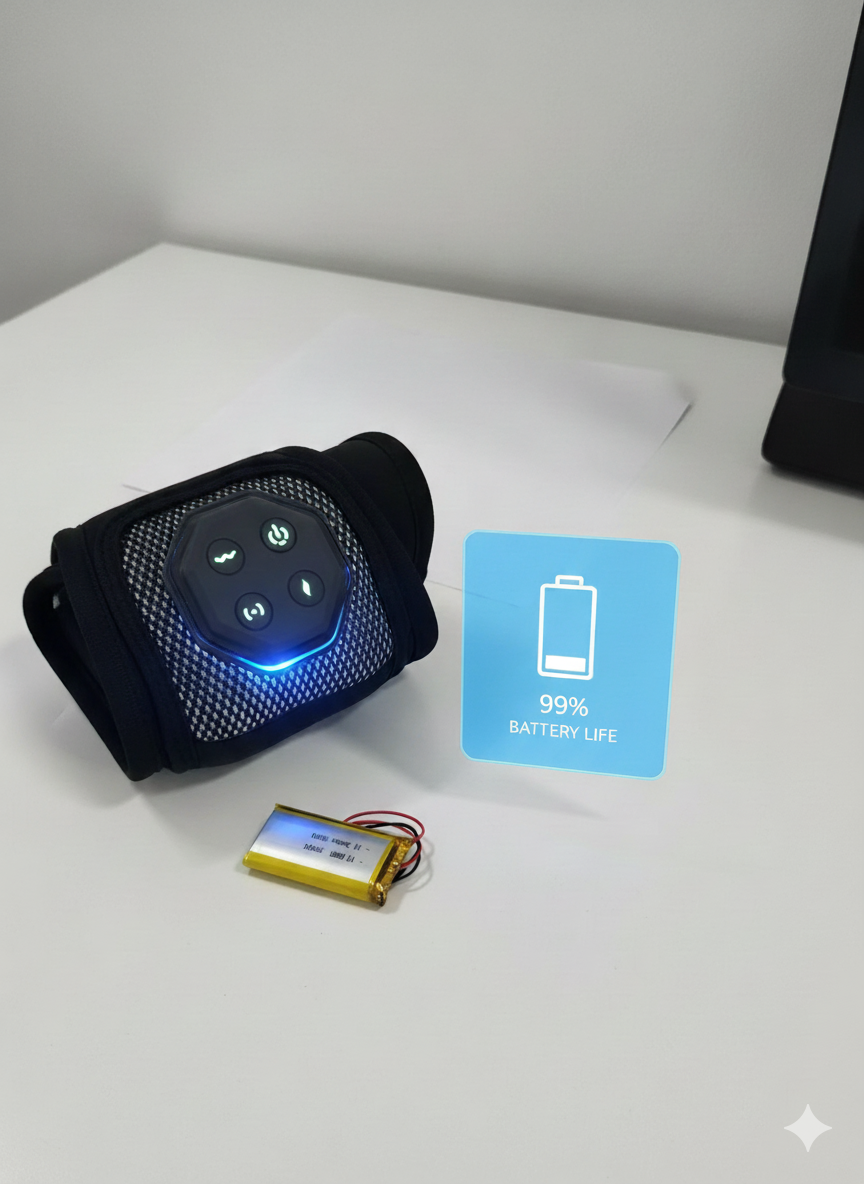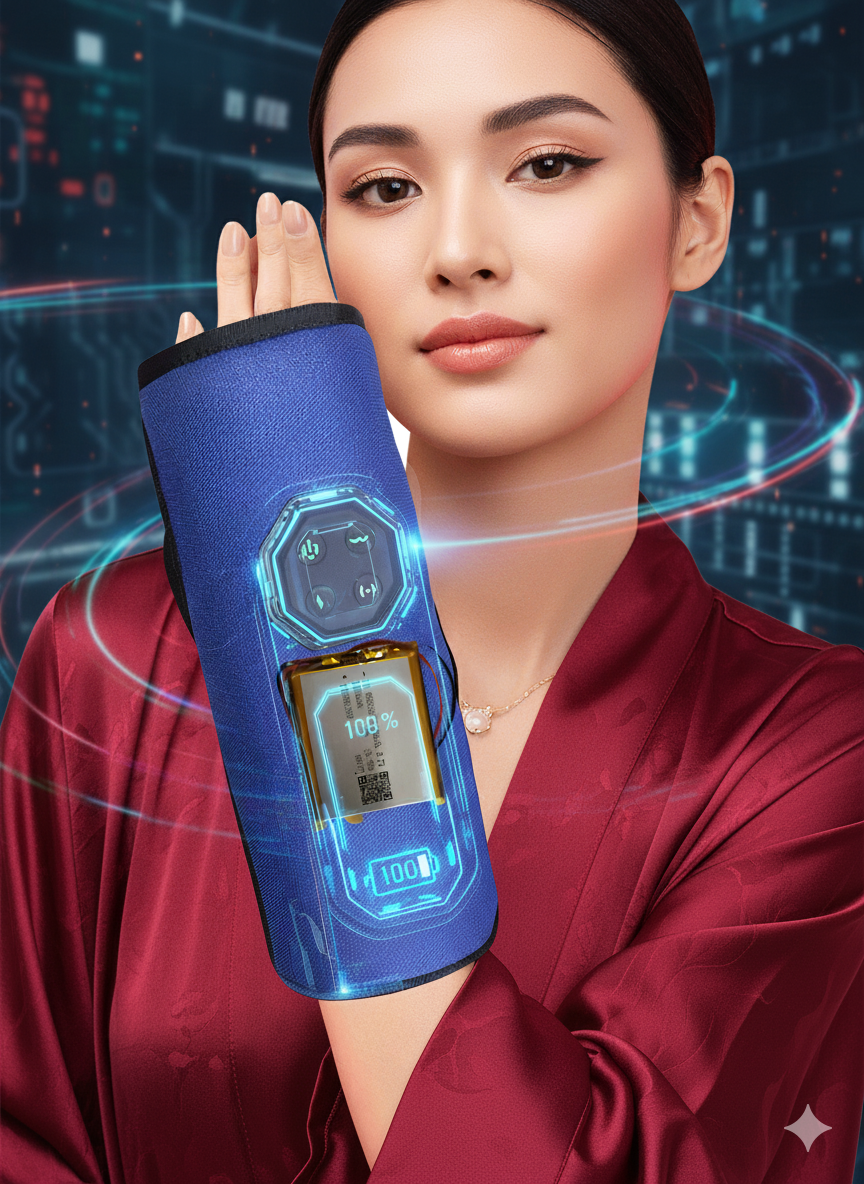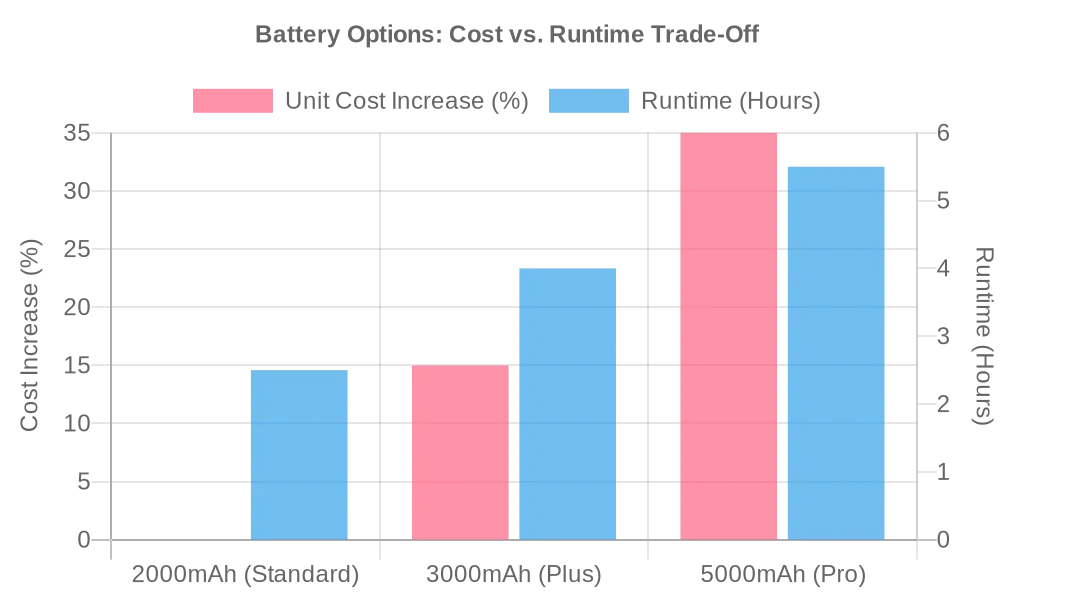A Sourcing Guide to mAh & Runtime
- By Grace
- Updated on
Let's talk about massager battery specs. I get questions about them every single day. You're looking at quotes from three different suppliers, and they all promise "long-lasting performance." But one offers a 2000mAh battery, another 3000mAh, and a third claims an impossible runtime from a tiny cell. It feels like you're just gambling, and I can tell you from experience, battery issues are a top reason for product returns and scathing one-star reviews.
We believe a good manufacturing partnership is built on transparency. It’s not about finding the biggest mAh number to slap on the box; it’s about engineering the right power solution for your product, your market, and your price point. Sticking an oversized, expensive battery in an entry-level product is just as bad as putting an underpowered one in a premium device.
This guide will clear up the confusion. I'll walk you through how we test and verify battery performance, the real-world trade-offs between capacity and cost, and exactly how to choose a battery for a massager using a smart, tiered strategy.
So Why Do Battery Claims Feel So Unreliable?
The core of the problem is the huge gap between sterile lab conditions and real-world use. Many factories test their batteries on the lowest setting with zero load, which produces amazing-looking numbers that just don't hold up once a customer is actually using the device. This is where trust breaks down.
I had a great chat with a retail partner who was tearing his hair out over customer complaints about massager battery life with his previous supplier. We showed him our transparent, real-world testing reports. He told us later that by setting accurate, honest expectations on his packaging, his customer trust actually went up and his return rate went down.

The "mAh myth" is a common trap. A higher milliamp-hour (mAh) rating generally means more massager battery capacity, but it's only one piece of the puzzle. The quality of the lithium-ion cells, the motor's efficiency, and the Battery Management System (BMS) are just as important. The BMS is the battery's brain—it protects it from overcharging and overheating. A cheap, uncertified battery might have a high stated capacity, but it will degrade quickly and can even be a safety hazard. This is exactly why we insist on using only Grade-A, branded 18650 lithium-ion cells for massagers. Every batch we receive goes through rigorous testing to verify its capacity and safety compliance.
The Anatomy of a Battery You Can Trust
A reliable battery is a system, not just a number. When you're evaluating a supplier, asking about these specific components will quickly separate the serious partners from the rest.

What's the Real-World Runtime I Can Honestly Promise?
This is the million-dollar question. To answer it, you need a testing protocol you can stand behind. Promising "up to 5 hours" is meaningless if that's only on the lowest, least-effective setting. We provide our partners with a clear breakdown of massager battery runtime based on how people actually use the device.
An e-commerce brand owner told us that our certified 3000mAh cells were the key to getting their product accepted by a major online marketplace. The platform's strict safety requirements meant our independent lab reports were essential for their approval.

Our standard testing protocol mimics realistic use. We measure runtime under a consistent load at medium speed. If the device has a heat function—a huge power drain—we test it both on and off. For instance, a 3000mAh battery might give you 4 hours of massage, but only 2.5 hours with the heat on. Providing this level of detail lets you market with integrity. When your packaging says "3 hours of runtime with heat," you know the customer's experience will match the claim.
Our Protocol for Numbers You Can Trust
To ensure consistency, every battery configuration goes through the same rigorous procedure. This allows for accurate, apple-to-apples comparisons.

How to Create a Smart Battery Strategy
The best approach is rarely "one size fits all." A savvy brand offers products at different price points, and the battery should align with that strategy. You wouldn't put a premium, high-capacity battery in an entry-level product—the added cost would price you right out of the market.

We work with our clients to develop a tiered battery offering for their private label massager battery needs. It usually looks something like this:
- Entry-Level: A 2000mAh battery provides a solid 2-3 hours of runtime at a very competitive price point.
- Mid-Range: A 3000mAh battery offers a noticeable step up—around 4 hours—for a modest increase in cost.
- Premium / "Pro": A 5000mAh battery delivers over 5 hours of runtime, justifying its higher price with best-in-class endurance.
This strategic approach lets you capture different segments of the market effectively. The key is that every tier uses certified, Grade-A cells, so quality is never compromised.
A Final Word on Degradation and Logistics
Don't forget about battery lifespan. A high-quality lithium-ion battery should retain about 80% of its original capacity after 500 full charge-discharge cycles. This is a critical spec and a hallmark of a durable product. Lastly, remember that shipping lithium-ion batteries involves strict regulations. We manage all the necessary documentation for air and sea freight, ensuring full compliance so you don't have to worry about it.
Choosing the right battery is a strategic business decision, not just a technical one. It’s about balancing cost, performance, and safety to match your goals. By focusing on verified massager battery quality and a tiered product strategy, you can build a product line that customers trust and your bottom line will thank you for. A transparent partner can give you the data you need to engineer the perfect power strategy for your brand.
If you’re ready to move beyond confusing specs and build a product with a reliable, certified power solution, contact our team. We can provide a free cost-benefit analysis for your project.




